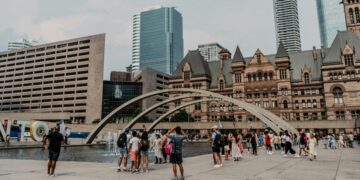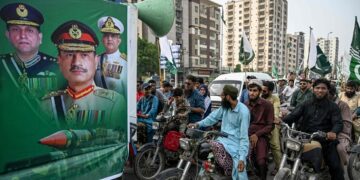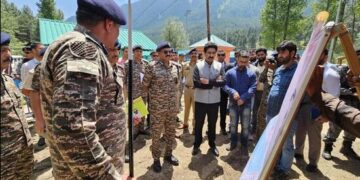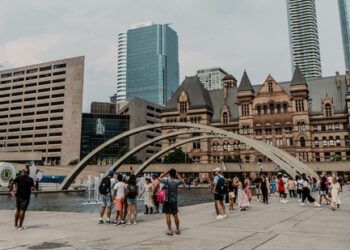The tranquil and scenic kibbutz of Kfar Aza, a close-knit Israeli farming community with around 750 residents, primarily families with young children, has transformed into a nightmarish scene of devastation and death. This transformation was the result of a relentless assault by Hamas terrorist gunmen who breached the border from the Gaza Strip, leaving the village in ruins.
Israeli Major General Itai Veruv, visibly shaken by the horrors he witnessed, described the grim reality as “mothers, fathers, babies, young families killed in their beds, in the projection room, in the dining room, in their garden.” He went on to emphasize that it was not a battlefield but a massacre. Some of the victims were found decapitated, further intensifying the shock and horror of the situation. Major General Veruv, who has served in the military for four decades, stated that he had never witnessed anything of this magnitude.
Kfar Aza, located just 3 km from the Gaza Strip, bore the brunt of the Hamas assault on southern Israel. Israeli officials report that the attack resulted in the deaths of at least 1,000 people, primarily civilians, who were killed in their homes, on the streets, or at a local dance festival. This devastating attack triggered retaliatory Israeli strikes that led to the deaths of at least 830 Gazans, accompanied by the destruction of entire districts, as reported by Palestinian officials.
Avidor Schwartzman, a survivor of the Kfar Aza attack, recounted that he and his family sought refuge in the safe room of their house for more than 20 hours. They were eventually rescued by Israeli soldiers, and when they emerged, they were confronted by a horrific scene of destruction and loss. Schwartzman described it as “pure hell,” with lifeless bodies scattered everywhere and their cherished homes reduced to ashes.
The Israeli Defense Forces allowed foreign press access to Kfar Aza, where the remnants of burnt-out houses overlooked streets filled with lifeless residents, armed militants, burnt vehicles, and the debris of destroyed homes. The chaos and destruction were overwhelming.
As of the time of reporting, there was no official death toll from the Kfar Aza kibbutz. Israeli soldiers were still searching homes that they believed might be rigged with explosives.
The military spokesperson on-site indicated that dozens of residents had been killed during the attack on Kfar Aza. The exact sequence of events was yet to be pieced together since the fighting only ceased late on Monday.
According to the spokesperson, Hamas terrorist gunmen breached the kibbutz’s fence, potentially using an earthmover to create an opening for numerous other gunmen to infiltrate the village. Militants also arrived on motorcycles and even a hang-glider. Major General Veruv estimated that approximately 70 gunmen entered the kibbutz.
Schwartzman shared his experience, describing how they were awakened by rocket sounds and took refuge in their safe room after receiving a warning message. For 21 hours, they remained barricaded in their safe room, hearing the sounds of shooting, gunfire, bombs, and alarms. The situation felt like a living nightmare, and they were completely unaware of what was transpiring outside.
As the soldiers continued securing the streets, bursts of gunfire and explosions echoed in the background. Jets flew above, and smoke rose from Gaza. Sirens warned of incoming rockets intercepted overhead. One soldier urged the world to bear witness to the horrors that had unfolded in Kfar Aza.
Kfar Aza has become a symbol of the harrowing consequences of the escalating violence between Hamas and Israel, with innocent lives lost and the community left in ruins. The international community closely watches the evolving situation, hoping for a swift end to the ongoing crisis.








 India
India












